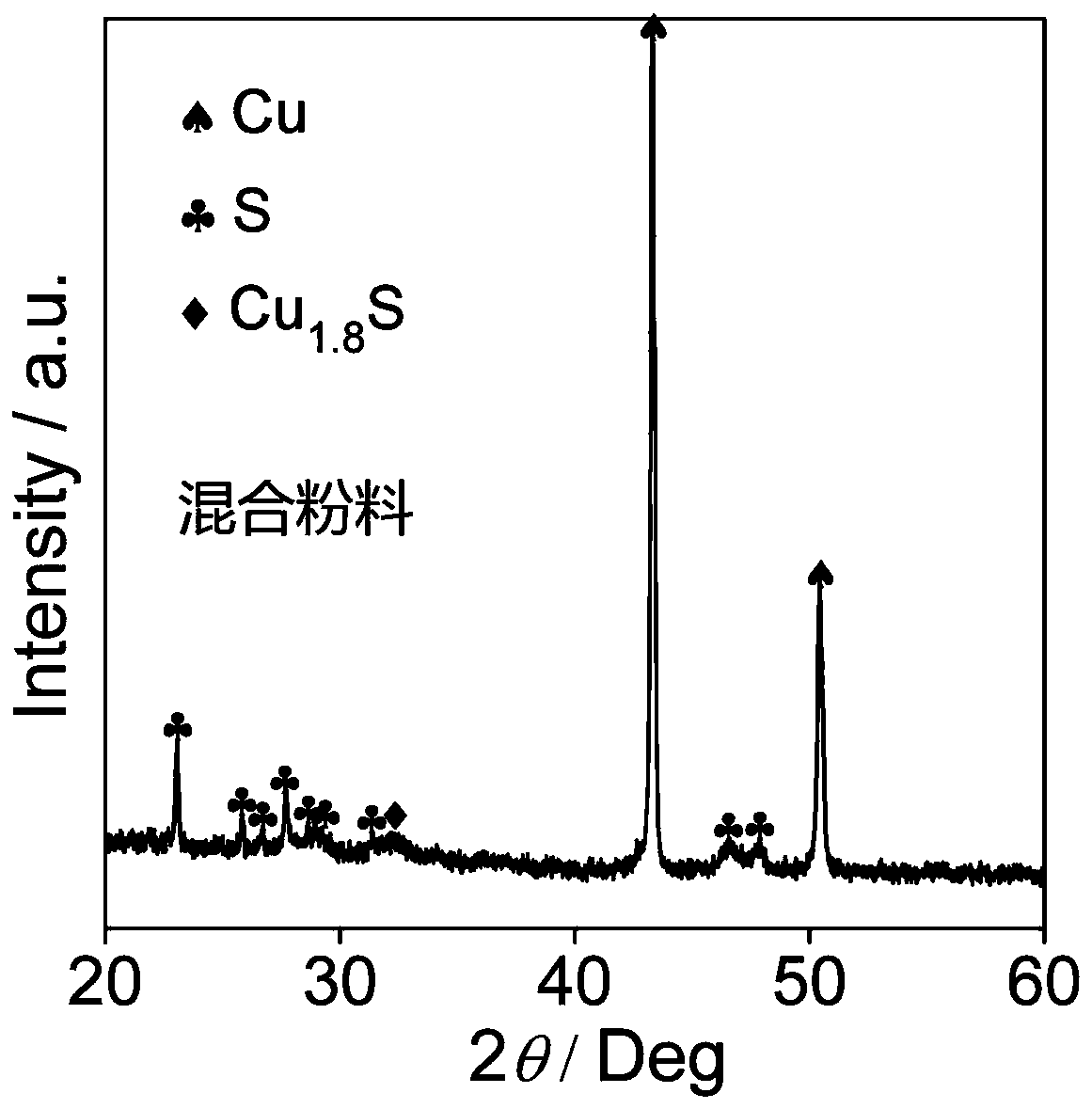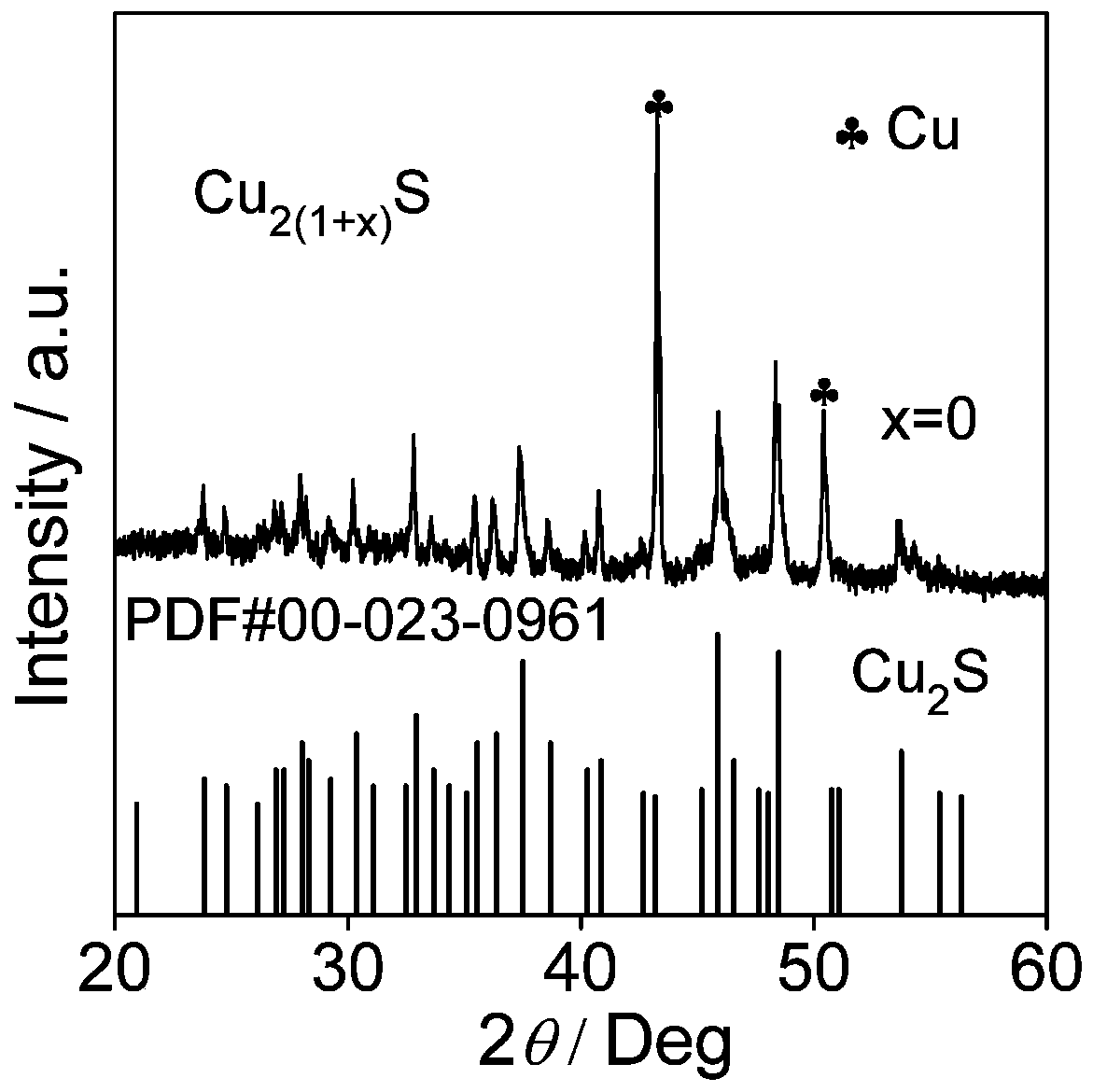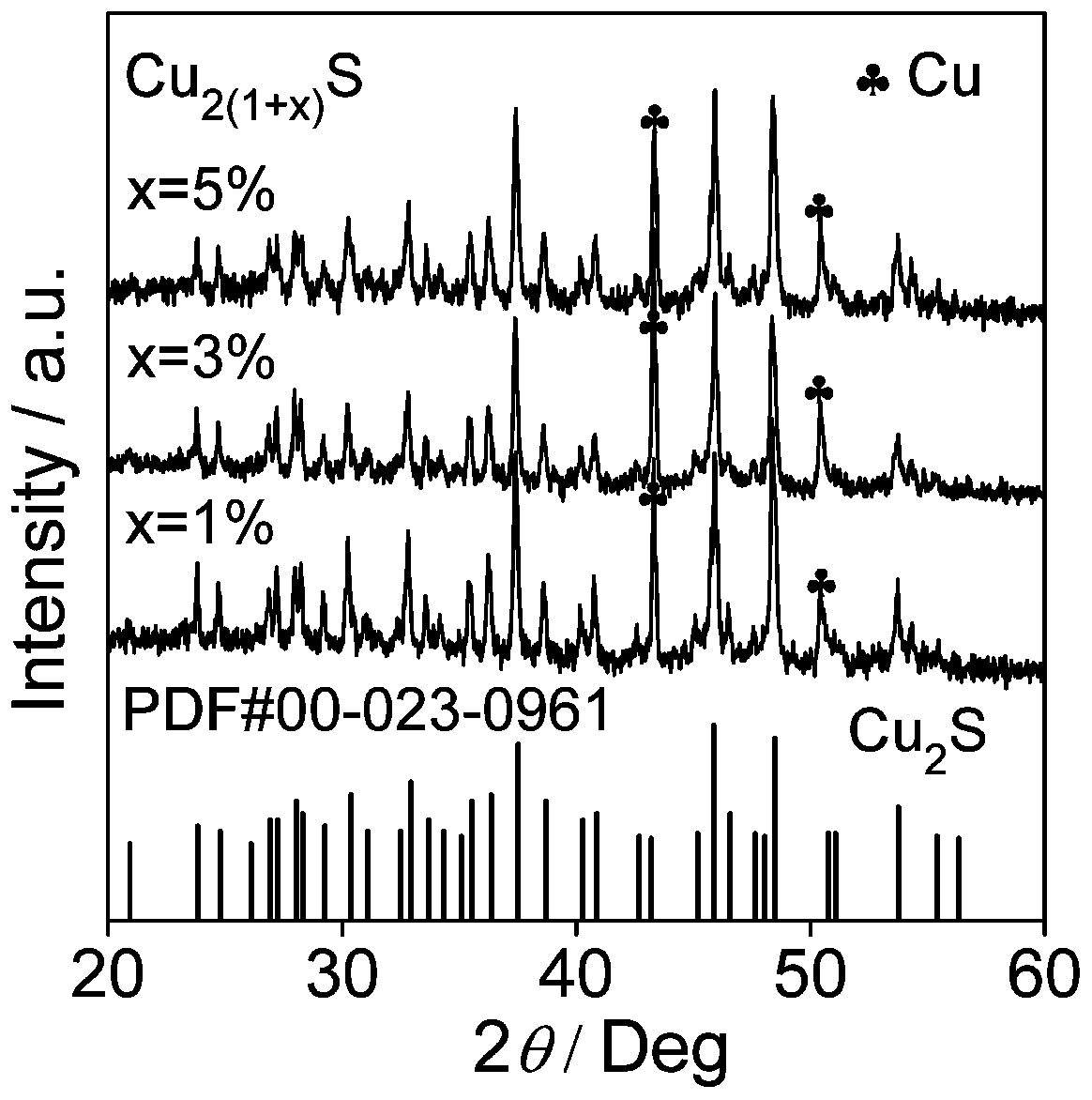A low-pressure induced rapid synthesis of Cu at room temperature 2 S-Based Thermoelectric Materials Approach
A technology of thermoelectric materials and room temperature, applied in the direction of copper sulfide, etc., can solve the problems of difficult to clean by-products, difficult to control components, environmental pollution and other problems, and achieve the effect of easy product composition, convenient operation, and suitable for popularization and application
- Summary
- Abstract
- Description
- Claims
- Application Information
AI Technical Summary
Problems solved by technology
Method used
Image
Examples
Embodiment 1
[0029] A low-pressure induced rapid synthesis of Cu at room temperature 2 The method for S-based thermoelectric material, comprises the steps:
[0030] 1) Using Cu powder and S powder as raw materials, weigh Cu powder and S powder according to the stoichiometric ratio of 2:1, totaling 5.5g;
[0031] 2) Place the weighed raw materials in a test tube, and then place them in a SK-1 rapid mixer. The entire mixing device is placed in a vacuum chamber with a vacuum of -0.09MPa. Set the mixing frequency at 900 rpm for 3 minutes, take out the powder to obtain the reaction product.
[0032] The product obtained in this embodiment is analyzed by XRD, and the results are shown in figure 2 ; The main phase obtained in the figure is Cu 2 The S compound also contains a certain amount of Cu element, which shows that simply shaking Cu and S stoichiometric (2:1) mixed powder at room temperature under vacuum conditions can quickly synthesize Cu 2 S compound.
Embodiment 2
[0034] A low-pressure induced rapid synthesis of Cu at room temperature 2 The method for S-based thermoelectric material, comprises the steps:
[0035] 1) Using Cu powder and S powder as raw materials, according to the stoichiometric ratio of Cu 2(1+x) S (x=1%, 3%, 5%) were weighed, totaling 5.5g respectively;
[0036] 2) Place the weighed raw materials in a test tube, and then place them in a SK-1 fast mixer. The entire mixing device is placed in a vacuum chamber with a vacuum of -0.1MPa. Set the mixing frequency The temperature is 3000rpm, the time is 3min, and the powder is taken out to obtain the reaction product.
[0037] The product obtained in this embodiment is analyzed by XRD, and the results are shown in image 3 ; The figure shows that a large amount of Cu was generated 2 The S compound also contains a small amount of Cu element, which shows that the mixed powder of Cu and S (with a slight excess of Cu) can be quickly synthesized by simply shaking the mixed powd...
Embodiment 3
[0039] A low-pressure induced rapid synthesis of Cu at room temperature 2 The method for S-based thermoelectric material, comprises the steps:
[0040] 1) Using Cu powder and S powder as raw materials, according to the stoichiometric ratio of Cu 2(1+x) S (x=-1%, -3%) were weighed, totaling 5.5g respectively;
[0041] 2) Place the weighed raw materials in a test tube, and then place them in a SK-1 fast mixer. The entire mixing device is placed in a vacuum chamber with a vacuum of -0.1MPa. Set the mixing frequency The temperature is 1500rpm, the time is 4min, and the powder is taken out to obtain the reaction product.
[0042] The product obtained in this embodiment is analyzed by XRD, and the results are shown in Figure 4 ; The figure shows that the resulting product is Cu 2 The S compound is single-phase, indicating that the mixed powder of Cu and S (slightly missing Cu) can be prepared by simply shaking the mixed powder of Cu and S at room temperature under vacuum condit...
PUM
 Login to View More
Login to View More Abstract
Description
Claims
Application Information
 Login to View More
Login to View More - R&D
- Intellectual Property
- Life Sciences
- Materials
- Tech Scout
- Unparalleled Data Quality
- Higher Quality Content
- 60% Fewer Hallucinations
Browse by: Latest US Patents, China's latest patents, Technical Efficacy Thesaurus, Application Domain, Technology Topic, Popular Technical Reports.
© 2025 PatSnap. All rights reserved.Legal|Privacy policy|Modern Slavery Act Transparency Statement|Sitemap|About US| Contact US: help@patsnap.com



